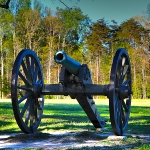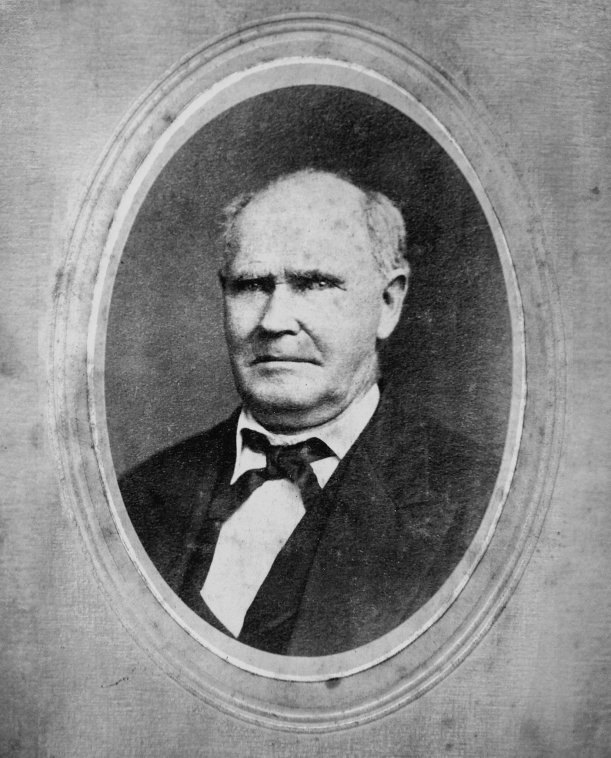by Wilson E. McIvor
“That game with the fifteen numbered balls is the devil’s tool”
Music Man, 1962
Royal Pittman McIvor, born 1876, was the son of Hugh Eugene McIvor and Elizabeth McCaul. He inherited his somewhat unusual name from grandfather Royal McCaul and on the other side he was the grandson of Christoper McIver, sometimes called “Old Kit”. Kit had moved into Lynchburg from Bedford County about 1830 when he was young Kit, married into the Halsey family and managed to do well for himself in business and property. He lived for a time on his property in Amherst County where he sold a right of way to the Orange and Alexandria Railroad and had a station on the property with “McIvor” on it. In 1905, three stops were combined and created Monroe, of which half the land had once belonged to Kit. Kit died December 19, 1882 when Roy was six years old. While owning considerable land in Amherst County, Kit was more a citizen of Lynchburg than Amherst and his obituary lists him as “the oldest inhabitant of the city, save one”.
On December 15, 1894, when Roy was 18 years old, his father Eugene was killed in a hunting incident. James Monroe Watts was with Hugh Eugene, reported the incident, and a few months later would become Roy’s stepfather. When he was 23, Roy was living with his extended family and listed as a “call boy” on the railroad, essentially a messenger boy rounding up train crews for runs.
Royal’s uncle, William Daniel, had served in the Amherst Battery with George Frederick Steen. Whether it was through that association or another, Royal met and became enamored with George Steen’s daughter, Carrie Elizabeth, and while Carrie evidently shared the feelings, her family objected. Could it be possible that the objection was over Roy being a call boy, or perhaps he had recently acquired a billiard room? The oldest of Carrie’s siblings was Walter Clarence who had a strong role in the family and was known to be straight laced. Though his sister Carrie said he used to chew, Clarence did not smoke, did not drink, and did not cuss; chances are he didn’t play pool either. Later, he would be the registrar in Monroe for many years. He and Royal were the same age.
Whatever the source of contention, Roy and Carrie went to North Carolina to be married. Jim Ford, Roy’s brother-in-law, was one of the witnesses on December 22, 1903. Almost exactly a year later, they would have a girl, Annie Elizabeth. A month more than a year after that, January 1906, the baby died; another month and a son was born followed two years later by a daughter.
The year on the calendar in the pool hall photo is difficult to read but the picture of Taft and February ending on Sunday is fair proof that it is 1909. The man in the picture would be about thirty three years old, the father of two, and apparently successfully running a two table billiard room decorated with Gibson Girl pin ups, a photo of president elect Taft, a couple of ads, a tableau of world famous billiard players produced by Brunswick-Balke-Collender Company, and, to his upper left, a badge shaped chalk weight also by BBC hangs from a cord over the table (close up below). A hand lettered sign is just above his head in front of the billiard wizards.
 Billiard Experts of the World poster similar to the one seen in the Frank Cash photograph at the top of this post.
Billiard Experts of the World poster similar to the one seen in the Frank Cash photograph at the top of this post.
Chalk weight
Roy and Carrie had recently finished building a traditional two over two farm house and would have a second son in 1910. A 1915 picture shows the three children carefully dressed and healthy, another son would be born in 1917.
In the third draft registration for World War I held on September 12, 1918, all men between the ages of 18 and 45 were required to register. On his form, Royal indicated his occupation as “billiard room.” In 1920, he had a pass from Southern Railway indicating he is a “Storehouse Laborer”. For Roy, a man in his mid forties, this was not an upward career move.
The following is the story Royal’s son, R. C. McIvor, told me, his son:
Three men including Papa had all purchased the same model .38 revolver.
One night they’d all been drinking, there was a row in the billiard room loud enough to be heard up and down the street. A man named Hub Shelton vowed he was going to go in and straighten it out. When he went in the hall, the lights went out and three guns were fired. When the lights were put back on, a man had been shot. It wasn’t clear whose gun did it. Uncle Chris and Dr. Scott got together and hushed it up.
“Uncle Chris” was Christopher Earl McIvor, Royal P. McIvor’s uncle, the operator of a grocery store close to the pool hall, pretty much the head of the family at that time. Uncle Chris was able to “hush it up” because everyone involved was either family or step family. The man who was shot is said to have been Royal’s step brother and probably shot by one of Roy’s cousins. Apparently the wounded man was successfully treated and eventually recovered, and Uncle Chris told everyone to keep it in the family.
It wasn’t that simple for Royal. He checked himself into the mental hospital at Staunton and stayed there for a little while, probably wanting to avoid a whole lot of pesky questions, like “who shot who”?
R. C. McIvor said, Papa was gone for a long time. Then one night I was in bed and I heard someone whistling “whip poor will” coming down the hill. I was happy because I knew papa had come home.
Roy had walked home from Staunton.
Likely the shooting was not an isolated incident; Carrie insisted that the Billiard Room be shut down. At an advanced age, Royal got a job on Southern Railway. He worked regularly and faithfully at low end jobs, most with the word “helper” in them and retired in 1947 on $65 a month, dying in 1953. Sadly, I only knew him as an old man with cataracts, not the man with the sassy cocked bowler hat and tie with the Prince Albert knot. I did not recognize until much later that I had played in the barn with the parts of disassembled pool tables around me. My dad, R. C. McIvor, used the slate tops for a patio.
Later my brother acquired the old home place and renovated it. He found six .38 shells thrown in the attic space over the kitchen.
One of them had been fired.
Trouble, with a Capital “T”
And that Rhymes with “P”
And that Stands for POOL
Music Man, 1962
This article is copyrighted 2018 by Wilson E. McIvor and was first published in The Muse, the newsletter of the Amherst County Museum & Historical Society. Used with permission.
The Frank Cash photograph of Roy in the pool hall is used with permission of the Amherst County Museum and Historical Society






